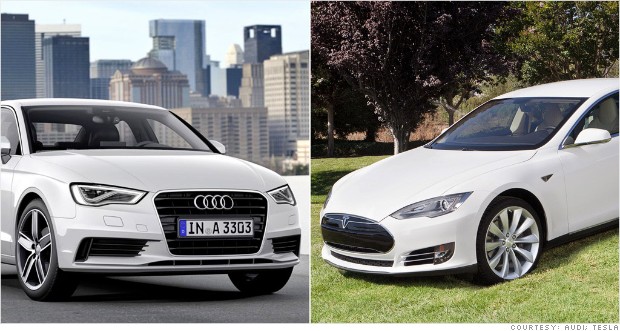 AT&T has long been at the forefront of efforts to reduce distracted driving with its no texting initiatives. Undoubtedly, through its leadership, many crashes have been prevented and many lives saved. So it was with great surprise that I read a January 7, 2014 article in CNNMoney on a partnership just announced between AT&T and car manufacturers Audi and Tesla.
AT&T has long been at the forefront of efforts to reduce distracted driving with its no texting initiatives. Undoubtedly, through its leadership, many crashes have been prevented and many lives saved. So it was with great surprise that I read a January 7, 2014 article in CNNMoney on a partnership just announced between AT&T and car manufacturers Audi and Tesla.
Audi and Tesla’s 2015 automobiles will be connected to AT&T’s wireless network so that drivers can now have news headlines read to them and can tweet and post to Facebook using their voices instead of their fingers. AT&T’s head of emerging devices, Glenn Lurie, told CNNMoney these advancements reflect a major step forward in converting cars from mindless machines to intelligent gadgets. “The car is really just going to become another device in your life,” Lurie said. “Our view at AT&T is that everything is going to be connected… making the car easier to use, safer, reduce distracted driving and deliver infotainment.”When asked whether these innovations will increase distracted driving, Lurie countered that visual distractions will be limited to passengers as drivers can keep their hands on the wheel, needing only their voices to send messages and communicate with their car.
Sound scientific research has demonstrated that when our minds are engaged in tasks other than driving the likelihood of a crash increases dramatically-even with voice to text devices and hands free cell phone conversations. The science of cognitive distraction has proven that our brains are limited in their ability to multi task when driving, and that hands free does not mean risk free. AAA/University of Utah Study
Mr. Lurie’s comments and auto manufacturers’ frenzy to incorporate more complex infotainment systems ignores that research and common sense. This new technology may be inviting to some, but just think whether you want to be driving down the interstate next to someone who is verbally texting or tweeting their boss, spouse or girlfriend. Or whether you want to give the keys to a dangerous technologically equipped car to your teen age child. Presumably even the decision makers at auto manufacturers have teen age children who are driving.
I am hoping that, consistent with its laudable efforts to reduce distracted driving, AT&T will require that auto manufacturers’ designs include features that will prevent drivers from using these systems when the car is moving. We have come a long way in raising awareness about all forms of distracted driving and the last thing we need is to build into automobiles newer and more elaborate distractions.
We don’t need our cars to be, as Mr. Lurie suggests, more “intelligent gadgets.” What we do need is more intelligent and responsible cell phone providers and automobile manufacturers in order to stem the epidemic of distracted driving.




